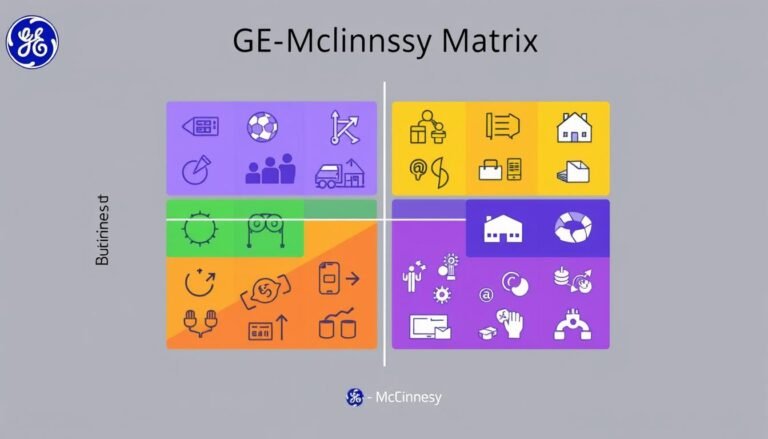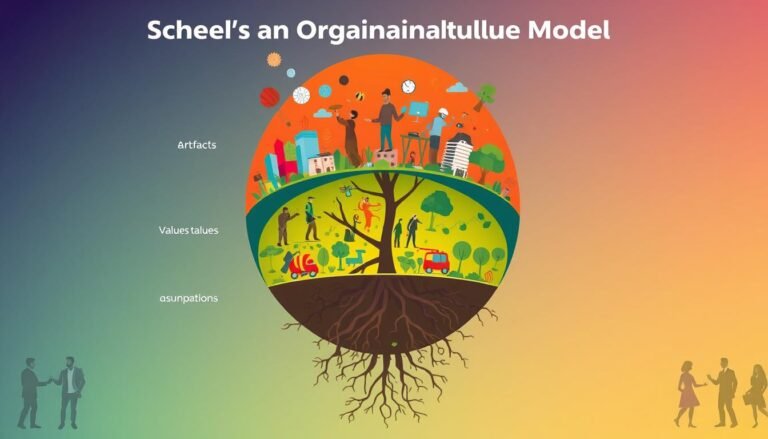Game Theory in Business: Outsmarting the Competition
How can businesses get ahead of their competitors? The key is in game theory’s strategic principles. By grasping the complex interactions and decision-making, companies can guess what their rivals will do next. This lets them plan winning strategies. We’ll dive into game theory and see how it can make your business lead the industry.
Picture a high-stakes game where every choice you make changes your market spot. That’s what businesses deal with in today’s fast-paced, competitive world. But what if you could see into your competitors’ minds, guess their next step, and beat them? Game theory gives you that chance, offering a strong way to make strategic decisions and gain an edge.
Understanding Game Theory and Its Applications
Game theory helps us study how people make choices when they affect each other. It’s about understanding how different players act and react. This knowledge helps businesses make better decisions and stay ahead in the game.
What is Game Theory?
Game theory is a way to study competition using math. It looks at how players decide based on what others might do. This helps businesses predict what their competitors might do next. By using game theory, companies can plan better and beat the competition.
Game theory is useful in many business areas, like setting prices, marketing, and making big decisions. Knowing what competitors might do helps companies make smarter choices. This gives them an edge in the market.
“Game theory offers a rigorous methodology for solidifying marketing strategies, outwitting rivals, and creating mutually rewarding customer relationships in a competitive environment.”
In New Zealand, supermarkets often change their prices to stay competitive. Game theory helps them find the best prices without starting a price war. This way, everyone can still make a profit.
Learning about game theory helps businesses deal with the complex competition. It lets them guess what others will do and make better decisions. This way, they can stay ahead of the competition.
Identifying the Key Players and Their Motivations
First, we need to spot the main players in the business world. This includes rivals, customers, suppliers, and others who matter. Knowing what each wants and needs helps us guess how they’ll act in different situations. It’s like playing a game where we need to know everyone’s moves.
Game theory says we should look at these things when figuring out who and why:
- Competitive Landscape: We must check out what our competitors can and can’t do. This helps us make better plans.
- Stakeholder Analysis: It’s important to know what customers, suppliers, and others want. This helps us make good choices.
- Player Identification: We need to see who’s important in the market and how they work together or fight. This is key to making smart moves.
- Business Objectives: We must be clear about what we want to achieve. This helps us make sure our plans fit with our goals.
By looking at these things, businesses can get a better picture of the competition and what drives others. This helps us predict what will happen and how to stay ahead.
“The key to success in business is to understand your competitors and their motivations just as well as you understand your own.”
Modeling the Competitive Landscape
After identifying the main players, the next step is to model the competitive landscape as a game. We look at the strategies each player can use, when they make their moves, and the rewards for each result. We use tools like the payoff matrix for simultaneous games and the game tree for sequential games. These models help businesses understand strategic moves and possible end results.
Types of Games and Modeling Techniques
Game theory offers different ways to study competitive situations:
- Payoff Matrices: These are for simultaneous games, where players decide without knowing the others’ choices. The matrix shows the rewards for each player based on their strategies.
- Game Trees: These are for sequential games, where players decide in a set order, knowing the previous moves. The tree shows all possible moves and their rewards.
Using these game modeling methods, companies can grasp the competitive scene better. They can guess outcomes and craft strategies to beat their competitors.
“Game theory provides a structured approach to understanding the strategic interactions and potential outcomes in a competitive environment.”
Analyzing Equilibrium Outcomes and Strategic Interactions
Understanding equilibrium outcomes is key in using game theory for business strategy. Concepts like Nash equilibrium, dominant strategy equilibrium, and subgame perfect equilibrium help us see how stable and dynamic the competitive world is. By looking at possible outcomes and how players react, companies can make smarter strategies to beat their competitors.
Nash equilibrium is named after John Nash, a mathematician. It’s a state where no player can improve by changing their strategy alone. This point shows a stable outcome where each player’s choice is the best against their opponents’ moves. Knowing about Nash equilibrium helps companies guess what their rivals will do and make smarter choices.
Dominate strategy is also key in game theory. It’s a strategy that is best for a player no matter what others do. Finding dominant strategies lets businesses predict their rivals’ actions and get ahead.
Game trees are useful in equilibrium analysis. They show possible moves in a game. These pictures help businesses see the steps and outcomes in complex situations.
Using these game theory ideas in planning helps businesses understand the competition better. They can then make better strategies to outdo their rivals.
Game Theory in Business: Outsmarting the Competition
In the business world, game theory is a key strategy for beating the competition. It helps companies understand the competition and plan better. By thinking ahead, companies can make choices that lead to the best results.
Game theory is used in many areas, like setting prices, making products stand out, and deciding when to enter the market. It helps businesses know what others might do. This lets them create strategies that beat the competition and strengthen their market position.
“48% of successful business leaders use game theory concepts to gain a competitive edge in the marketplace.”
A big idea in game theory is the Nash Equilibrium. It means no player can improve by changing their strategy alone. This helps companies predict what their competitors will do. It guides their decisions and shows the best way to act.
Game theory also helps businesses think about how their actions will affect others. This lets them make choices that take into account everyone’s moves. It’s a way to make smarter decisions.
Using game theory, companies can better understand their competition and make smart moves. It’s useful for setting prices, improving products, or entering the market at the right time. Game theory is a powerful tool for businesses aiming to stay ahead.
Limitations and Challenges in Applying Game Theory
Game theory is useful for businesses, but it has its limits. A big issue is assuming everyone has all the information and acts rationally. This doesn’t always match the real world of dynamic markets and uncertainty. Information asymmetry and fast-changing markets make it hard to guess what others will do.
Game theory might also miss the real-world complexity. It’s important to think about when and how to use it. The models used in game theory might not fully capture the details of today’s markets. This can lead to wrong predictions or poor decisions.
“Game theory can provide valuable insights, but its assumptions and simplifications may not always align with the realities of modern, rapidly evolving markets.”
Businesses should be careful with game theory. They need to balance its benefits with its downsides. Using other analytical tools and understanding their industry can help make better strategic choices.
Conclusion
Game theory helps businesses beat their competitors by understanding the game they play. It lets companies see who the main players are, how they interact, and what outcomes might happen. This helps in making smarter strategic decision-making moves.
Knowing game theory in business is key for staying ahead in fast-changing markets. It helps companies make better choices, see what their rivals might do, and get a lasting edge.
Using game theory in business comes with its own set of challenges, like not having all the information and dealing with complex markets. Yet, companies that dive deep into game theory can really stand out. By always improving their strategies and adjusting to new market trends, they can stay ahead and lead their industries.
Source Links
- MDP: Out-think! How to use game theory to outsmart competition – February 2020 | hrnxt.com
- Game Theory in Economics
- How to Use Game Theory to Outsmart Your Competitors and Win in Business
- Game Theory Levels the Playing Field
- Understanding Game Theory – FasterCapital
- Game Theory: A Comprehensive Guide
- Game Theory Basics: How to Outsmart Your Opponents
- Game Theory – Management Guru
- How can you use game theory to predict competitors’ behavior?
- Game Theory: Outsmarting people
- How can you use game theory to predict your rivals’ next moves?
- Limitations And Challenges Of Applying Game Theory To Competitor Analysis – FasterCapital
- Game theory: Startup Battles: Using Game Theory to Outmaneuver Competitors – FasterCapital
- The Limitations Of Game Theory – FasterCapital
- Why is game theory formulated in terms of equilibrium instead of winning strategies?
- What is Game Theory? Discover Its Impact on Everyday Decisions!
- Game Theory in the World of Multi-Cuisine Restaurants: A Recipe for Success
- Outsmarting the Competition: Information Superiority in the Digital Age






